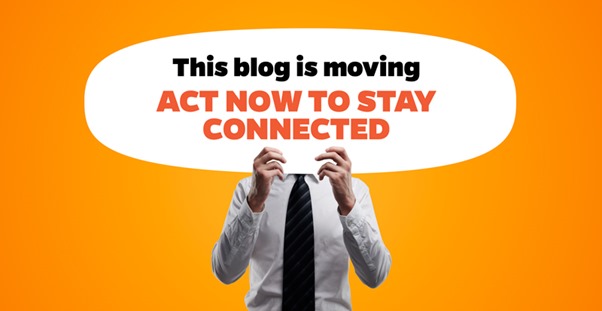This blog is moving, please join me on the other side
My lovely company, Wild Orange Media, is almost two years old, so we’ve had a bit of a revamp and have being tying up some loose ends.
I’ve been blogging across various platforms since 2003 but this is the last post I’ll be making to this personal WordPress.com site. From tomorrow, all new posts will be landing on our shiny, new self-hosted WordPress.org site at www.wildorangemedia.com.
WHAT DO YOU NEED TO DO?
If you follow this blog on the http://allisterfrost.com website or through WordPress Reader or an RSS reader like Feedly or Digg Reader, you’ll need to update your reader subscription so it points to http://www.wildorangemedia.com/blog/.
If, however, you have subscribed to receive email updates from this blog, you’re all set to go. We’ll automatically transfer your subscription over to the new site so your emails will continue like magic!
Thanks for your support over the years, see you on the other side!
Common Website Mistakes To Avoid

We all see a lot of websites these days. But how often do you find yourself on a new site wondering what the company actually does or wants you to do next?
It’s an all too common problem. In our haste to build websites, we often forget to look at the initial designs through our site visitors’ eyes and routinely fail to make it easy for them to do what we want.
This recent post from Socialmouths highlights five common website mistakes that dramatically impact the number of conversions.
Top of the list is the failure to state a clear value proposition, by demonstrating what makes your organisation special and different. In a nutshell:
you have to tell people quickly and simply what it is that you do, and why you’re great at it
And there are other design crimes like too many CTAs (calls to action), no single dominant CTA, and insufficient reasons to believe that also regularly impair the effectiveness of many websites.
Next time you visit a new website, think about the five common mistakes that Socialmouths has identified and ask yourself if they apply and how they could be addressed. Then look back at your own site, wearing your desired visitor’s hat, and ask yourself the same questions.
I’m not a gambling man, but I’ll bet you’ll instantly spot several things you can improve.
Friction Free Forms for Marketing Ninjas
Happy New Year!
I’ve written before about the dangers of asking too much of your site visitors before you have established a meaningful, value-based relationship with them.
Now Lisa Margetis at Singlehop has reminded me of the importance of keeping any “asks” you must make of your customers as simple and pain-free as possible.
In her curiously titled “Contact Forms for the Minja” (which stands for Marketing Ninja, apparently!) infographic, Lisa illustrates how response levels and conversions fall as the number of fields in an online form increase. Using data from Dan Zarella, we can see that the optimal number of fields in a form is around 3 to 5:

And from Marketing Sherpa we also know which fields are most valuable to most marketers:

In summary, as Lisa rightly points out:
It’s all about finding the right friction
Too much friction (e.g. too many fields or hoops to jump through on your site) and people will refuse to fill out your online form. Too little friction and the data you collect are unlikely to yield sufficient insights to allow intelligent segmentation and targeted content marketing in future.
As Lisa’s infographic shows, there are many examples that prove, and sometimes disprove, the theoretical principles. But the simplest rule I think any marketer should follow is:
Only collect data that you actively plan to use.
In my experience, that’s by far the easiest way to ensure that all forms present the minimal amount of friction to your online customers and prospects.
Now go forth, learned Minja, and create beautiful, friction-free forms!
A Tech-Free Festive Break
The Christmas and New Year festivities are almost upon us. And, as I pull down the shutters on another year of trading, I’m looking forward to switching off from the bustle and hustle of business life at Wild Orange Media and spending some quality time with family and friends.
I’ll also be making a conscious effort to spend less time thinking about what’s likely to happen in our digital future, and more time living in the present, enjoying the here and now.
And you might like to also. Technological progress and computers of all shapes and sizes have transformed large parts of our world. But they will never be a credible substitute for human-to-human interactions and the simple joy of spending time with others. That’s why I’ll be switching off as much as possible, to make time and space for some other, more precious stuff to fill my days.
Whatever you’re doing this holiday season, have a wonderful, relaxing time, and recharge those batteries. I suspect we’ll see things in 2014 that will be faster, smaller, more astonishing, more awe-inspiring than anything we’ve seen before.
To you, dear reader, thanks for all your support and encouragement in 2013. See you in the New Year!
Merry Christmas.

50 Things You Don’t Need in 2014
As 2013 draws to a close, I thought it might be fun to take a look at some well-loved things that suddenly find themselves obsolete in our fast-changing world.
I can’t pretend this is a comprehensive list of all-things-obsolete, but coming up with fifty was far easier than I first expected!
What did I miss?


